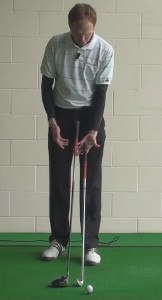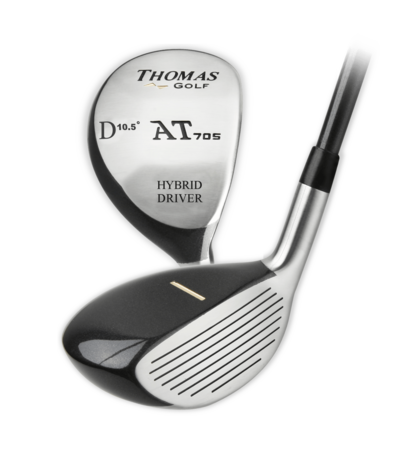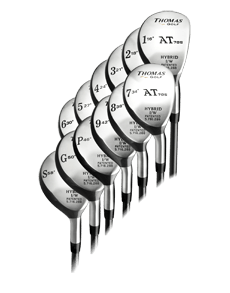
Hitting irons and woods in golf requires slightly different techniques due to their differing club designs and purposes. Here are some tips for hitting irons and woods effectively:
Hitting Irons:
- Proper setup: Position the golf ball in the center of your stance or slightly ahead of center for most iron shots. Align your feet, hips, and shoulders parallel to the target line.
- Ball-first contact: With irons, the goal is to make ball-first contact rather than hitting the ground before the ball. Focus on striking the ball with a descending blow, taking a divot after impact.
- Ball position: The ball position should be slightly behind the center of your stance with longer irons and slightly forward for shorter irons. This helps create the correct angle of attack and promotes solid contact.
- Take a divot: Aim to strike the ball first, then take a divot after the ball. This helps ensure a clean strike and proper ball flight.
- Controlled swing: Use a controlled, smooth swing tempo and maintain good balance throughout the swing. Avoid overswinging, as it can lead to loss of control and inconsistent strikes.
- Proper weight transfer: Shift your weight onto your front foot during the downswing to help compress the ball and achieve a crisp strike.
Hitting Woods:
- Tee it up: When using a wood (driver or fairway woods), tee the ball up higher to allow for a sweeping motion and to promote a higher launch angle.
- Wide stance and ball position: Take a slightly wider stance than with irons and position the ball more forward in your stance, closer to your front foot. This promotes an upward strike and better contact with the driver and fairway woods.
- Sweep the ball: With woods, aim to sweep the ball off the tee or fairway rather than taking a divot. This requires a shallower angle of attack and a sweeping motion through impact.
- Tee height consistency: Maintain consistent tee heights when using the driver or fairway woods to promote consistent contact and ball flight.
- Full shoulder turn: Make a full shoulder turn on the backswing to generate power and coil. This helps create energy for a strong downswing and transfer of power to the ball.
- Use the club's loft: Allow the club's loft to do the work for you. Avoid trying to lift the ball into the air forcefully; instead, focus on making solid contact and letting the loft of the club create the desired trajectory.
Remember that practice and proper technique are essential for improving your iron and wood shots. Consider taking lessons from a golf professional to receive personalized guidance and feedback on your swing.
One of the first things any beginning golfer should learn is the difference between various clubs. At the most basic level, there are two main types. Those with smaller, thinner heads made from steel are called irons. The big-headed clubs, usually made of titanium or steel and coated with paint, are called woods. (That’s what they used to be made of.)
Irons are normally used from fairways, rough, from the tee of a short par 3 or when trying to avoid trouble such as a hazard. Iron shots typically don't go as far as wood shots, but are easier to hit accurately. In fact, some players choose to exclusively hit irons, sacrificing distance for accuracy.
The woods generally feature longer shafts and less-lofted clubfaces; therefore, they hit the ball farther but are harder to control than irons. Woods are normally used off the tee box for maximum distance, but can also be used from the fairway or rough when you have a long way to go to reach the green.
The driver, or 1-wood, is usually only hit from the tee, because it’s extremely difficult to hit off the ground. Be careful not to default to hitting a wood from every tee, though. Sometimes you'll want to use a shorter wood, an iron or a hybrid club – a combination wood/iron — to avoid trouble such as a hazard.
Hybrids have features of both a wood and iron. They are easier to hit than a lot of woods and irons and offer more distance than irons. Because of this, hybrids are useful from both the tee and fairway.
Update:
Beginner golf tip for hitting both irons and woods:
Tip: Focus on Proper Setup and Alignment
Proper setup and alignment are fundamental aspects of hitting both irons and woods effectively. Beginners often underestimate the importance of these fundamentals, but they play a significant role in the quality of your shots. Here's how to set up correctly:
For Irons:
- Ball Position: Place the ball in the center of your stance for medium irons (6-7 irons). As the irons get shorter (8-9 irons) or longer (3-5 irons), adjust the ball position slightly back or forward in your stance.
- Stance: Stand with your feet shoulder-width apart. Ensure your weight is evenly distributed between both feet.
- Clubface Alignment: Align the clubface square to your target. To check, look at the leading edge of the clubhead; it should be parallel to the target line.
- Grip: Hold the club with both hands, maintaining a neutral grip. The “V” formed by your thumb and index finger of each hand should point towards your right shoulder (for right-handed golfers).
- Posture: Bend at your hips to create a slight forward tilt from your hips. Keep your back straight and your knees slightly flexed.
For Woods:
- Ball Position: Place the ball just inside your front heel for most fairway woods and drivers. This promotes an upward strike on the ball.
- Stance: Widen your stance compared to iron shots. Your feet should be wider than shoulder-width apart.
- Clubface Alignment: Ensure the clubface is square to the target, just like with irons.
- Grip: Maintain a neutral grip as you would with irons. Proper grip pressure is essential; don't grip the club too tightly.
- Posture: Create a slight tilt away from the target. Your upper body should lean slightly away from the target, especially with longer clubs.
Additional Tips:
- Focus on a consistent setup and alignment routine. This will help you replicate a consistent swing and ball flight.
- Use alignment aids like alignment sticks or markers on the ground to ensure your feet, hips, and shoulders are parallel to the target line.
- Keep your eye on the ball throughout your swing. Avoid looking up too early.
- Start with shorter clubs (irons) and work your way up to longer ones (woods) as you gain confidence and consistency.
- Practice your setup and alignment on the driving range regularly. It's a critical part of building a reliable golf swing.
Remember that golf is a game that rewards consistency. By establishing a solid setup and alignment foundation, you'll be better equipped to hit both irons and woods consistently and accurately as a beginner.
Q&A on the beginner golf tip for hitting irons and woods effectively:
Q1: Why is a proper setup and alignment important for hitting irons and woods? A1: Proper setup and alignment are crucial because they help ensure that you're in the correct position to execute a consistent and effective golf swing. They lay the foundation for accuracy and ball-striking consistency.
Q2: Should I use the same setup for both irons and woods? A2: While the basic principles of setup and alignment remain consistent, there are subtle differences between irons and woods. For example, ball position and stance width may vary slightly. It's essential to adapt your setup to the specific club you're using.
Q3: How do I know if my clubface is aligned correctly to the target? A3: To check your clubface alignment, use a visual reference on the clubhead, such as the leading edge. It should be parallel to the target line. You can also use alignment aids like alignment sticks or training aids to ensure proper alignment.
Q4: What is the “neutral grip,” and why is it important? A4: A neutral grip is one where both hands are placed on the club in a way that allows the clubface to be square to the target at impact. It's crucial because an incorrect grip can lead to inconsistent ball flights and mishits.
Q5: Can I use the same setup for all my irons, or should I adjust it for each iron? A5: While the setup for most irons is similar, you may need slight adjustments as you move through your iron set. Typically, ball position and stance width may vary slightly to accommodate the varying lengths and lofts of irons.
Q6: How can I practice my setup and alignment effectively? A6: You can practice your setup and alignment by using alignment sticks or markers on the ground to create reference points. Spend time on the driving range rehearsing your setup routine for both irons and woods to build consistency.
Q7: Are there any drills or exercises to help with setup and alignment? A7: Yes, there are drills and exercises that can help improve your setup and alignment. Some golf instructors offer specific drills, and there are training aids designed to assist with alignment. Practice these regularly to reinforce good habits.
Q8: Can a beginner golfer expect immediate improvement by focusing on setup and alignment? A8: Yes, beginners can see immediate improvements in their ball-striking consistency and accuracy by paying attention to setup and alignment. These fundamentals are essential for building a solid golf swing foundation.
Q9: Should I seek professional instruction to ensure proper setup and alignment? A9: Seeking professional instruction is an excellent idea for beginners. A golf instructor can provide personalized guidance, identify any setup or alignment issues specific to your swing, and help you make necessary adjustments.
Q10: Are there any resources or videos that can help me visualize proper setup and alignment? A10: Yes, there are many instructional videos and online resources that demonstrate proper setup and alignment for golfers. You can find tutorials from reputable instructors on websites, YouTube, or through dedicated golf instruction apps.
Remember that consistent setup and alignment are essential components of developing a reliable golf swing. As a beginner, focusing on these fundamentals will set you on the path to improving your golf game.






